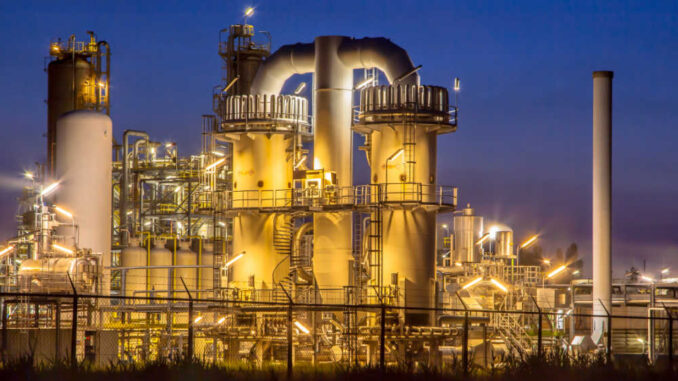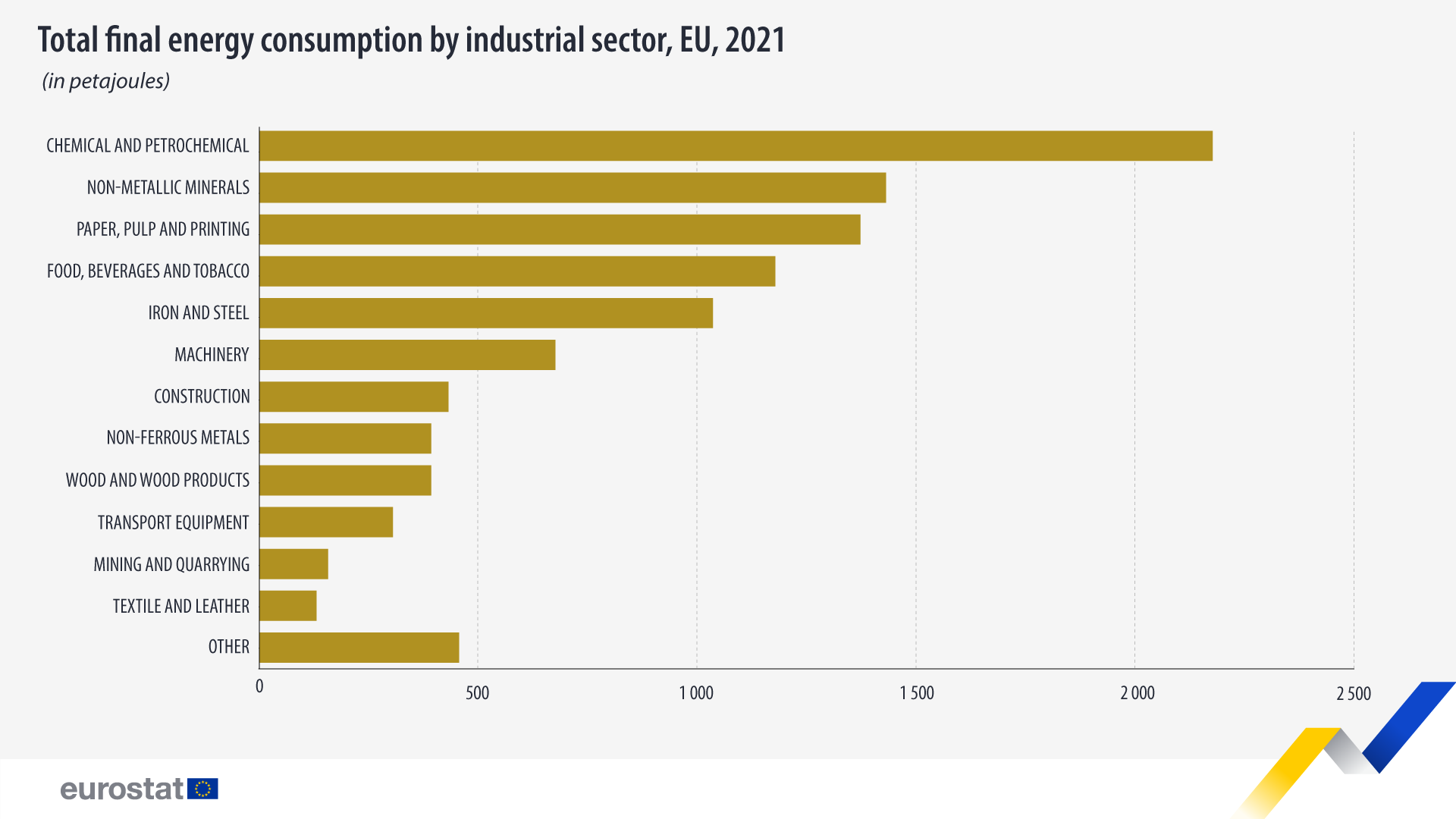
The industry sector was the third largest consumer of final energy in the EU in 2021, after transport and households, accounting for 25.6% of the EU’s final energy consumption.
By looking at the data, it is clear the sector depends on fossil fuels for its energy needs. Natural gas, oil and petroleum products, solid fossil fuels and non-renewable waste accounted for over half (50.9 %) of final energy consumption in industry in 2021. In absolute figures, this dependence becomes even more evident since more than one-third of the electricity and more than half of the heat produced in the EU in 2021 came from fossil fuels.
Data show that in 2021, electricity (33.2%) and natural gas (32.7%) accounted for two-thirds of final energy consumption in the EU’s industry sector.
The remaining energy products represented much smaller shares: oil and petroleum products (excluding biofuel) represented 9.8%, renewables and biofuels 9.7%, and solid fossil fuels accounted for 6.4%.

Source dataset: nrg_bal_s
Chemical and petrochemical sector consumed the most final energy
In 2021, the EU’s industrial sectors which reported the largest shares of final energy consumption were chemical and petrochemical, with more than one-fifth (2 159 petajoules (PJ) or 21.5%), non-metallic minerals (1 420 PJ or 14.1%), paper, pulp and printing (1 361 PJ or 13.6%), food, beverages and tobacco (1 168 PJ or 11.6%) and iron and steel (1 027 PJ or 10.2%).
The lowest share of total final energy consumption was recorded for the textile and leather sector, with 1.3% (129 PJ).
The chemical and petrochemical industry, the biggest industrial final energy consumer in the EU, was characterised by a strong dependence on natural gas. This energy product was the most important for both the manufacture of chemicals and chemical products (35% of final energy consumption), as well as for the manufacture of basic pharmaceutical products and pharmaceutical preparations – a much smaller consumer but with an even higher share of natural gas in final energy consumption (48%).
In the non-metallic minerals industry, the manufacture of glass and glass products also relied heavily on natural gas (74% of final energy consumption), as did the manufacture of other non-metallic minerals (excluding glass, cement, lime and plaster) with 56% of final energy consumption coming from natural gas.
For the paper, pulp and printing industry, other energy products, like renewables and biofuels, as well as electricity, were more important than natural gas. Nevertheless, gas represented around one-quarter to one-third of final energy consumption in different industry sectors.
Data presented here refer to a period before coordinated gas demand reduction measures were introduced at EU level. In August 2022, the EU adopted a voluntary gas demand reduction target of 15%, which may affect future data on final energy consumption in industry.

Source dataset: nrg_bal_s



